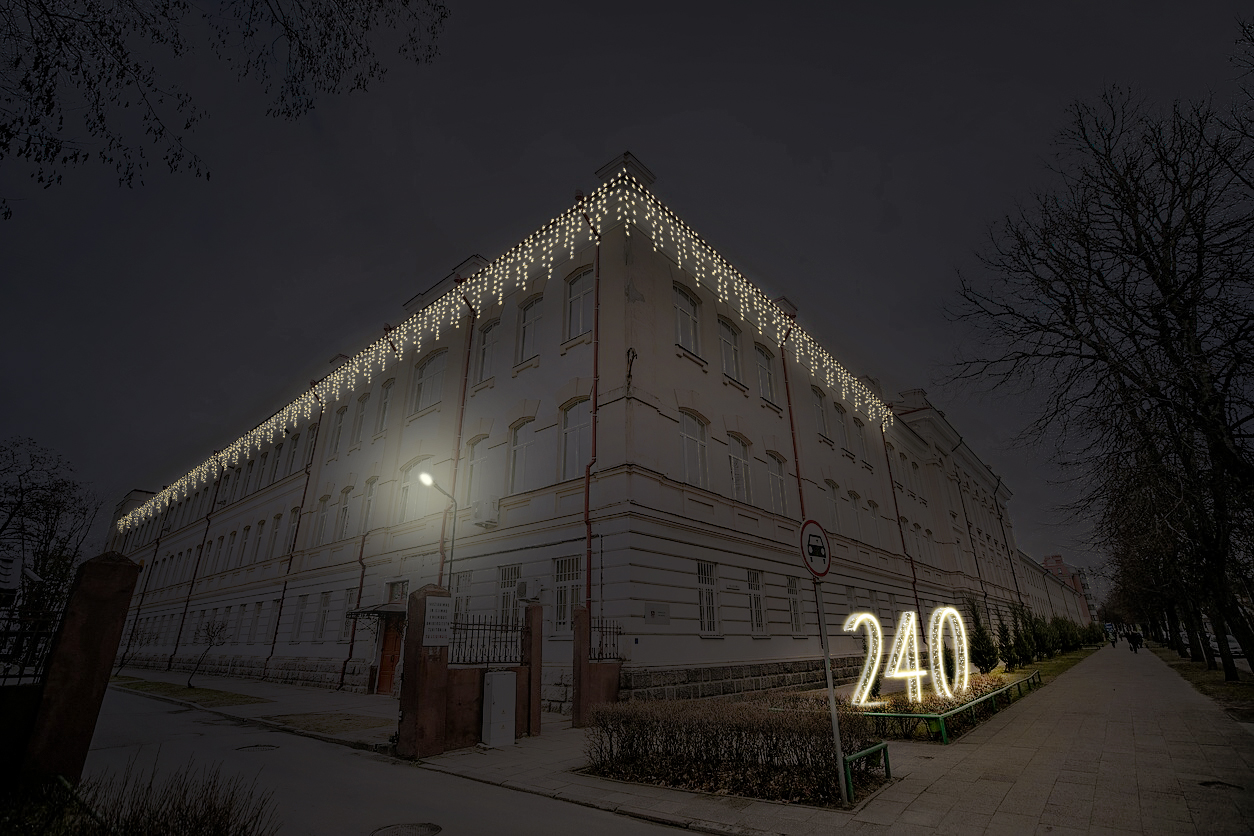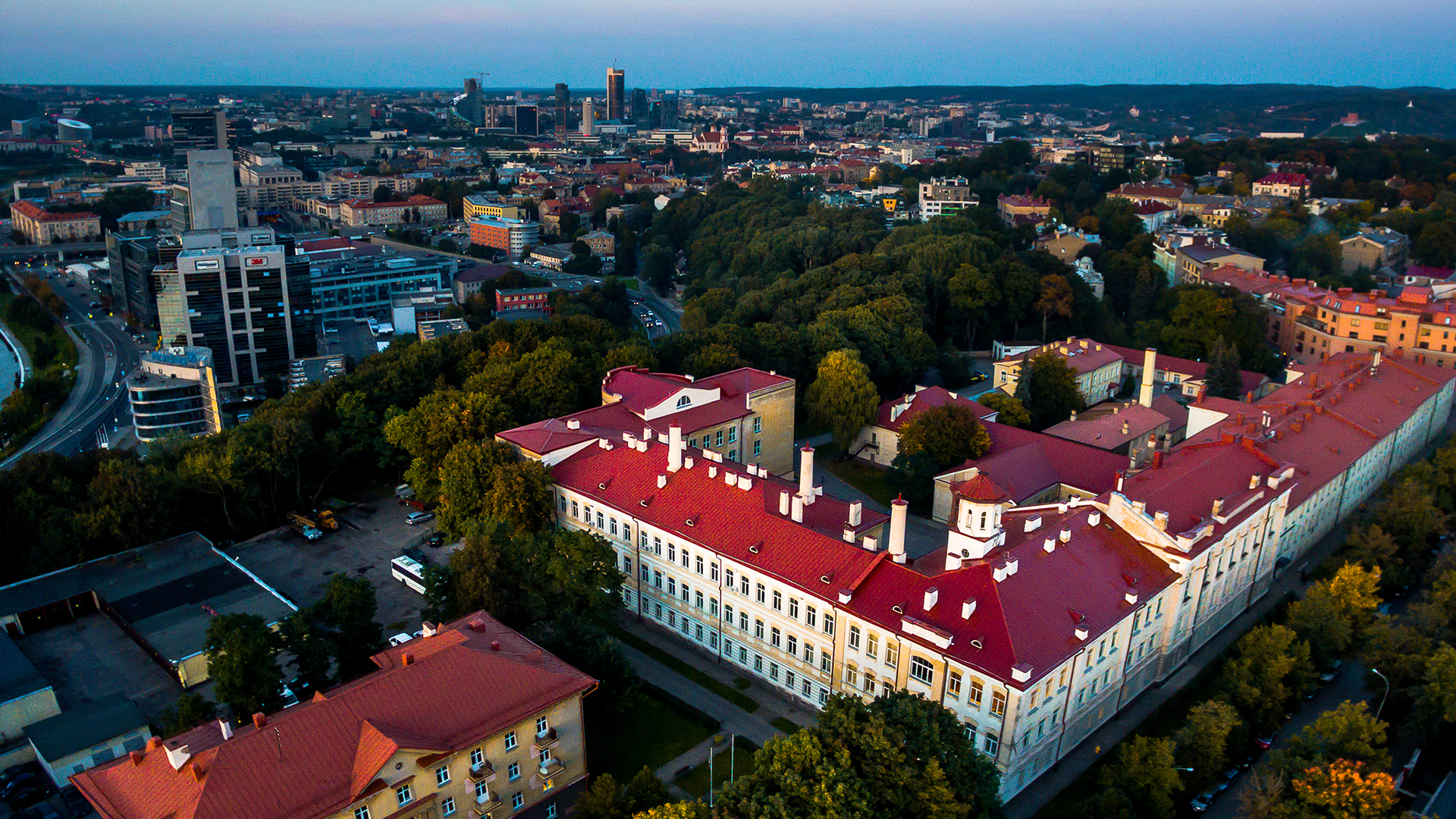
Faculty of Medicine is celebrating 240th anniversary on 24 November, 2021. Photo: Faculty of Medicine of Vilnius University
On 24 November, 2021 the Faculty of Medicine of Vilnius University, will celebrate its 240th anniversary. This landmark event calls for a look into the past and a review of the history of the faculty from its establishment to modern times. The overriding characteristics of the faculty ‒ its strength, steadfast community and drive ‒ have been its trademarks throughout different periods of history. Because of these characteristics, the faculty can pride itself on overcoming the challenges in its path, responding to the needs of the community, society and the state. Let's start from the beginning.
Innovative solutions throughout history
Following the granting of privilege by Władysław IV Vasa, King of Poland and Grand Duke of Lithuania in 1641, the then, Academy of Vilnius began teaching law (both canon and civil) and medicine. In same year, the Faculty of Law was established, however the establishment of the Faculty of Medicine took place some 140 years later. The official date was 24 November 1781, when the then Rector, Marcin Odlanicki Poczobutt, mentioned the newly opened unit of medicine, for the first time, in his speech at the opening of the academic year.
Since its foundation, the faculty has been known for innovation. For example, Stefano Lorenzo Bisio, dean of the newly opened faculty, was the first in the Polish-Lithuanian Commonwealth to teach a course on physiology. A high level of studies was also maintained by professors from Italy, France, Germany and Poland who taught at the faculty. The Faculty of Medicine was growing and improving, which was reflected in its changing structure. For example, in 1797, there were six departments at the faculty: chemistry, anatomy and physiology, pathology, pharmacy, the natural sciences, surgery and theoretical surgery.
In 1804, German physician Johann Peter Frank, a pioneer of public health and social medicine, was invited to the Faculty of Medicine. He reformed the faculty by introducing a new study plan, which envisaged a preparatory course in the natural sciences for those who subsequently went on to study medicine for six years. Medical studies were organised using a system where studies began with simple courses that gradually became more complex. This model, designed at Vilnius University, later became an example for other universities in the Russian Empire.
 Faculty of Medicine of Vilnius University, XXth century. Photo: Faculty of Medicine of Vilnius University
Faculty of Medicine of Vilnius University, XXth century. Photo: Faculty of Medicine of Vilnius University
Continued as a medical and surgical academy
It is important to mention some of Frank's other achievements. In 1805, he founded the famous Vilnius Medical Society, which continues to unite physicians in Vilnius today and in 1806, he established an outpatient clinic. He opened vaccination and maternity institutes in 1808 and 1809 respectively. As a result, the German doctor is credited with laying the foundation for the further development of the Faculty of Medicine. Even when in 1832, following the decree of Tsar Nicholas I, Vilnius University was closed, the Faculty of Medicine became the Vilnius Academy of Medicine and Surgery and successfully continued its operations.
More than 20 disciplines were taught at the Academy of Medicine and Surgery. Some of them, such as medical statistics, medical ethics, medical history or medical geography, were completely new and had not been taught in Vilnius before. About 700 students received their physician diplomas from the Academy of Medicine and Surgery, more than 150 doctoral theses were defended, and the most talented students had an opportunity to continue their studies at universities in Paris and Vienna.
A decade after it was founded, the Academy of Medicine and Surgery was closed. However, the traditions of medical science and practice were continued by the Vilnius Medical Society and other organisations. In 1918, when Lithuania and Poland regained independence, the hope to re-establish Vilnius University emerged. After the annexation of the Vilnius Region by Poland, Vilnius University was re-established and was named after Stefan Batory, the first ruler of the Polish-Lithuanian Commonwealth.
Standing out from other universities
Despite these pivotal historical changes, the Faculty of Medicine continued to grow from strength to strength. In a little over a decade, the re-established faculty with four departments, expanded to 13 departments and 12 clinics. The Stefan Batory University had twice as many students as other universities in Poland. A fifth of all pharmaceutical specialists in Poland were trained at the Department of Pharmacology, founded in 1924.
It is estimated that the most productive period for the Faculty of Medicine at the Stefan Batory University (1924‒1938) saw the publication of nearly 1,577 research papers. Some 80 doctoral and 20 post-doctoral dissertations (habilitations) were defended. A total of 13 textbooks were published. In addition, at the initiative of the Faculty of Medicine, hospitals, clinics and other healthcare centres were established in Vilnius. At the beginning of the 1930s, one of the largest cancer research and treatment centres in Europe was operating in Vilnius.
Following the outbreak of WWII on 1 September 1939, the Stefan Batory University was reorganised on 15 Dcember. On 15 June 1940, Lithuania was incorporated into the Soviet Union, and in 1941, war between Germany and the USSR was declared. On 13 July 1944, when the German troops withdrew, the Red Army occupied Vilnius once more. During the Stalin era (1922–1952), Sovietisation became very intense, including at Vilnius University. Despite such turbulent times, there were some obvious achievements and during the 1950s, the battles against tuberculosis and venereal diseases continued and were gradually won.
Between 1960 and 1980, the structure of the Faculty of Medicine began to change. Old units were reorganised, new units were established and the personnel were renewed. By 1981, there were 17 departments and clinics. In addition, in 1982, the construction of the Vilnius University Hospital, Santaros Klinikos, was completed and the Vilnius University Hospital (Emergency Hospital) was opened in 1985. These two large clinical medical centres, located in Santariskes and Lazdynai in Vilnius, still remain significant today in the training of students at the Faculty of Medicine.
 Faculty of Medicine of Vilnius University. Photo: Faculty of Medicine of Vilnius University
Faculty of Medicine of Vilnius University. Photo: Faculty of Medicine of Vilnius University
Enjoying abundance and innovation today
After the restoration of Lithuania's independence in 1990, residency studies were introduced and in the same year the faculties of medicine and the qualification training of physicians were merged. New opportunities opened up for physicians and researchers. They were able to exchange information with international partners, and fundamental research flourished. New clinics were established, more focus was placed on the field of psychiatry and the mental health of children and adolescents. The clinical and theoretical resources and the inventory of the Faculty of Medicine were gradually modernised.
In the period between 1965 and 2019, over 90 staff of the faculty became winners of the Lithuanian Sciences Prize or received other awards. The papers of researchers from the Faculty of Medicine have been published in high ranking scientific journals.
Today, the Faculty of Medicine is one of the largest in Vilnius University. It consists of four institutes, each with smaller departments, clinics, centres, units and laboratories. In 2020, the Faculty of Medicine employed 1,419 staff and had almost 3,000 students.
In 2013, medical and dentistry studies for international students, taught in English, were launched. The number of international students is growing every year. A total of 20% of the students of the faculty come from the following countries: Brazil, Canada, France, Germany, Italy, Israel, Kazakhstan, Poland, Sweden, Vietnam, and others. They are active in student representation, various committees and other faculty management bodies.
The future is strongly aligned with change
In the future, the Faculty of Medicine is looking to strengthen its research base. In support of this, construction of a new research centre at the Faculty of Medicine will be announced this year. The centre will carry out fundamental and clinical research, and researchers will have the opportunity to work using state-of-the-art equipment. The Lithuanian Ministry of Education, Science and Sport has allocated 10 million Euros for the acquisition of equipment.
The research centre will be located in Santara Valley, in the Santariskes district of Vilnius, close to the Vilnius University Hospital Santaros Klinikos and various private medical centres. This will provide conditions for the new research centre to cooperate with other institutions in the field of disease diagnosis, treatment and prevention. It is expected that the investment will see a return in an abundance of high-quality scientific output, and additionally attract significant international talent. This would pave the way for further development and more ambitious goals.
Some of the study programme activities of the Faculty of Medicine will take place at the new centre. For example, courses on kinesiotherapy, ergotherapy, rehabilitation and pharmacy. The centre will be open for research to students from all fields of medical studies. The implementation of this project will inevitably strengthen the activities of the Faculty of Medicine and thereby, the image of Vilnius University and its Faculty of Medicine.
